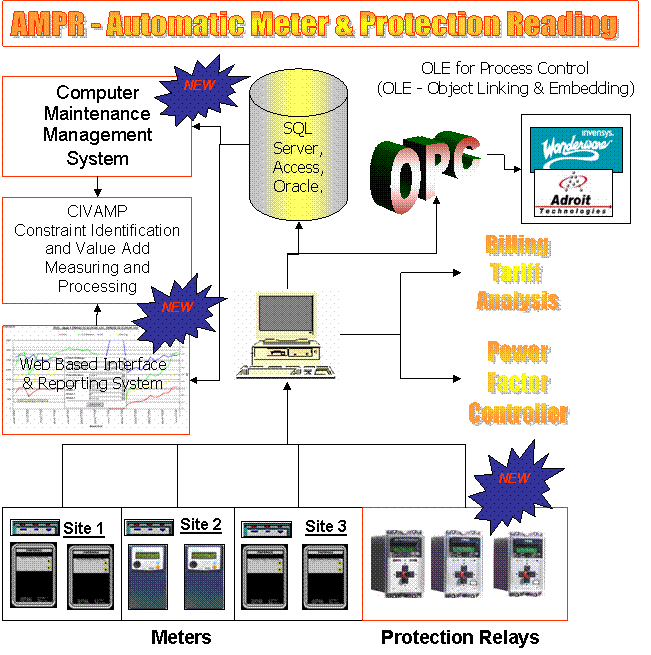|
| Plant Maintenance Resource Center
Closing the GAP in Maintenance Systems Using AMPR
| |
|
|
|
|
|
Closing the GAP in Maintenance Systems Using AMPRAuthor : Brian Watson
Over the past three decades equipment to run our processes has become more and more sophisticated. This, in turn, has increased the need for better educated maintenance employees. However, employee loyalty to an organisation is a thing of the past. Employees come and go and when they go they take most of their plant knowledge with them leaving a new recruit to fend for him or herself. Knowing this, many companies have implemented systems not just to try and improve an organisation performance but to also capture events for analysis. One such an event is recording equipment performance during its life cycle. These events can be processed in databases, which in turn are managed by front-end systems such as SCADA’s and CMMS’s (Computerised Maintenance Management Systems). What is a CMMS? If you have very little knowledge of a CMMS, then a CMMS is a software system that manages maintenance by executing scheduled maintenance, work order (job) requests, spares & inventory management, failures, causes, corrective actions and a lot more. The reporting function of a CMMS is the most important part of the system as it allows the user to detect the parts of his or her organisation that is most constraining the operations. With this information the engineers can execute a corrective action to eliminate or rework the constraint to best suit their organisations operations. Eliminating or reworking the constraint will lead to a reduction in downtime, increase uptime (availability) that will in turn increase the profit margin. It sounds fantastic doesn’t it? Finally a solution and a good ROI (return on investment), or is it? For the amount of money that companies invest in maintenance systems it is criminal not to get a good ROI. What were you told when you purchased your maintenance system? It will give you a ROI? It can and it should but if it’s not, as I know in many cases it’s not, then what is constraining us from obtaining the expected ROI? Our major problem in achieving ROI from maintenance systems is due to an overload of human intervention that is still required which is only partially managed and partially enforced. Although there is a recognisable improvement in managing maintenance systems compared to ten years ago, the level of human intervention that is still required gives chance for too much guesswork and minimises the accuracy of data captured for future analysis. So what solution do we have that will help us combat this and get us our ROI? A company called Strike in Johannesburg, South Africa has taken their protection and metering equipment into a new level by auto populating the event alarm codes directly into any CMMS or SCADA system using an AMPR (auto meter and protection reading) system. This means that failure codes will be auto populated into a CMMS with a much higher accuracy level than ever before. Jointly, the AMPR will auto populate a works order with the majority of the information required, all the planner will need to do is print and allocate the works order. The failure code will automatically appear on the works order thus saving huge amounts of time, which will decrease the MTBF (mean time between failures). But it doesn’t end there. Each failure will be limited to potential causes and corrective actions thus removing a large amount of guess work and vastly improve the prognosis. AMR (auto meter reading) systems have been on the market for several years but AMPR’s have not, it’s a brand new and improved concept. Although many SCADA systems do get populated with alarm codes from protection equipment, the abundance of information does not clearly distinguish corrective actions. To add to this, when a SCADA system is populated with a fault code the maintenance department has its own process of data configuration and requires even more human intervention. Human intervention will always be there but to achieve a nice and healthy ROI the accuracy of the data population must improve. Combined with the AMPR offering is a Consulting service called CIVAMP, which is a Constraint Identification and Value Add Measuring and Processing System. For more information please contact Brian Watson on +27844331903 or +27113140815 or visit Strike at www.strike.co.za
Plant Maintenance Resource Center Home Maintenance Articles
Copyright 1996-2009, The Plant Maintenance Resource Center . All Rights Reserved.
|

